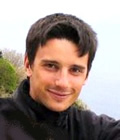Erlang Express
 Target Audience: Software Developers
Target Audience: Software Developers
Prerequisites: Good programming skills in another language
Objectives:
• Understanding of the basics of Erlang.
• Read/Write/Design Erlang Programs.
• Good knowledge of the development environment and tools.
• Provides basics needed to attend the Advanced Erlang/OTP course
Goal: Attend the Advanced Erlang/OTP course and eventually pass the Erlang certification exam.
Duration: Three days.
Registration: 08:30 on 27th April 2009 at the Sheraton Palo Alto.
Description: The course contains all the Erlang basics such as sequential and concurrent programming, along side error handling. The Erlang development environment is presented, with a special emphasis on the Erlang mode for Emacs alongside the major debugging tools. Good and bad programming practices are discussed, as are tools used to profile the system. OTP design principles and concepts are sneaked into the material as well as the exercises.
Course Contents:
- Introduction
- Basic Erlang
- Sequential Programming
- Concurrent Programming
- Process Design Patterns
- Process Error Handling
- Code Updating
- ETS tables
- Distributed Programming
- Ports and Sockets
Introduction
Introduction to the software needs of telecom control systems, followed by a history of Erlang, its features, and product and research examples within and outside Ericsson.
Basic Erlang
This section deals with Erlang data types and pattern matching. Functions, modules, and BIFs are discussed. Before the exercises, the Erlang shell, useful shell commands as well as Emacs and its Erlang mode are introduced.
Sequential Programming
The Sequential Programming section comprehends conditional evaluations, guards and scope of variables. It then introduces recursion, with a special emphasis on different recursive patterns, tail recursion, and space saving optimizations. Before the exercises, libraries and their manual pages, possible run time errors and the debugger are demonstrated.
Concurrent Programming
This section describes the creation of processes and their life span. It looks at sending and receiving messages, selective reception, and passing data in the messages. It continues with the various uses of time outs and registering processes, and terminates by showing the generic process code structure. Before the exercises, a demonstration of the Process Manager tool is given.
Process Design Patterns
This section introduces the concept of process patterns, preparing the students for the OTP behaviours. It gives a detailed example of a client server system, looks at finite state machines and event handlers. Synchronous versus asynchronous message passing is discussed.
Process Error Handling
This section introduces the simple but powerful error handling mechanisms in processes. It looks at process links, exit signals and their propagation semantics. How robust systems are built in Erlang are discussed, and an example from the Process Design Patterns section is re-implemented, making it robust.
Code Updating
The section introduces software upgrade during run time. The error handler, the code server, and code search paths are covered, as is the .erlang file.
ETS tables
An introduction to the Erlang Term Storage is given, together with its different table options. Examples on when to use and not to use ETS tables are covered. A demonstration of the table visualizer is provided.
Distributed Programming
An introduction to the requirements of distributed systems is given, and how Erlang is able to fill these requirements. The distribution syntax and semantics are covered, followed by the BIFs and the net kernel.
Ports and Sockets
An introduction of the mechanisms used to make Erlang more open are taken up in this section. Ports, for external communication within the same machine, and Sockets, for communication on IP networks are discussed. The difference between TCP and UDP is described.
Teacher(s):
Michal Slaski
 A Senior Software Consultant at Erlang Solutions, Michal
Slaski started programming in Erlang on the AGH University of Science
and Technology in Krakow, Poland, when working on his Masters
prototyping massively multiplayer online games. After graduating, he
joined Erlang Solutions on key projects around the world.
He is currently heading Erlang Solutions's new Krakow
office in Poland, keeping the Erlang flag up high.
A Senior Software Consultant at Erlang Solutions, Michal
Slaski started programming in Erlang on the AGH University of Science
and Technology in Krakow, Poland, when working on his Masters
prototyping massively multiplayer online games. After graduating, he
joined Erlang Solutions on key projects around the world.
He is currently heading Erlang Solutions's new Krakow
office in Poland, keeping the Erlang flag up high.